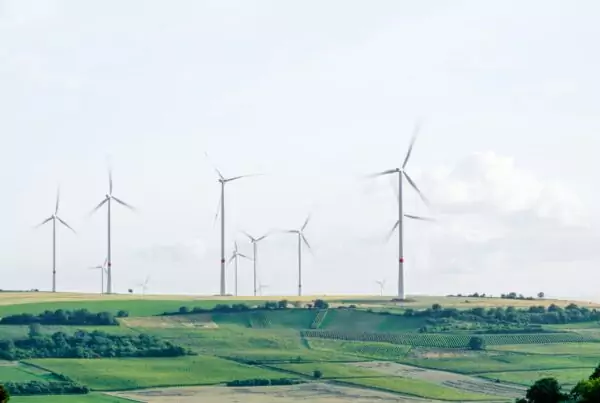The Climate Co-Investor Tracker was launched to better track the funding flows, gaps and opportunities in the climate tech space. Designed and developed by SecondMuse and Vibrant Data Labs, supported by NYSERDA and Impact Alpha, and drawing on data from Crunchbase, the tool takes users one step closer understanding how the ecosystem operates.
As the world struggles through the hottest days since records began, the case for quality data on climate change and its solutions could not be clearer. The Climate Co-Investor Tracker was launched in April at the San Francisco Climate Week to better track the funding flows, gaps and opportunities in the climate tech ecosystem. Designed and developed by SecondMuse and Vibrant Data Labs, supported by NYSERDA and Impact Alpha, and drawing on data from Crunchbase, the tool maps the climate tech investment landscape. It makes the data, patterns and insights around climate tech co-investment accessible, transparent and usable. Understanding how co-investments are taking place is critical. This collaborative approach to funding derisks investment while developing a more resilient ecosystem.
Despite the global investment slowdown, climate tech is looking stronger than other sectors. While the overall venture market dropped by 53% in Q1 2023, compared to Q1 2022, the decrease in climate tech was just 40% in the first half of 2023 according to CTVC data. Deal activity may be slowing across the board – but less so in climate tech. By analyzing investment flows between investors and innovators, we can identify patterns and gaps in climate tech funding, and plan to shape these more strategically.
SecondMuse Co-CEO Todd Khozein shared, “Capital can catalyze change by supercharging technological capacity. But it needs to be deployed strategically: informed by experience, expertise and justice. This tool demonstrates how the climate tech funding landscape currently connects and collaborates. We can use these clusters of insight to leverage existing strengths. More than that – we can also identify gaps and opportunities to target for greater impact. With a thorough understanding of who is doing what in the ecosystem, we can accelerate our ambitions to achieve a climate transition and protect the planet.”
Let’s dive deeper into how understanding the movement of money helps build a stronger climate tech landscape.
Why mapping co-investors matters
The Climate Co-Investor Tracker collates historical investment data from Crunchbase up to March 2022, with LinkedIn profile data and information from investment recipients, instead of investor reporting. This paints a more realistic portrait of the landscape, based on activity over aspiration.
This detail helps drive a better understanding of the climate tech landscape on a number of fronts. It helps investors identify partners to invest with. It also highlights clusters of expertise for the benefit of investors, startups and policymakers alike. For climate tech solutions to support climate action, they need to challenge business-as-usual approaches. This can feel daunting when it feels like you’re working against the tide; but the ability to see a community in the Climate Co-Investor Tracker helps innovators and investors forge ahead.
The tool also helps startups identify sources of funding and advice. SecondMuse Capital’s Senior Lead on Climate Venture Investments, Pierre Paffenhoff, reflected that while the Climate Co-Investor Tracker is not a solution to gaps in funding, “it can show you who is climate relevant, who has the right experience, in which sector, in which geographies, who is new to climate, and who has been at it for a while.” This level of detail will help startups develop incredibly targeted capital-raising and funding strategies, saving precious hours to focus on developing their climate tech solutions. However, understanding how investment is currently working is one thing. To drive systems-level change, the status quo needs to be challenged with more solutions for collaboration and alternative funding.
Putting equity and justice on the (investor) map
Mapping the landscape of current dealflows by theme and challenge also reveals where the biggest gaps in funding lie. But holistic systems change need to address the current (mis)distribution of power. Immense design flaws in the current economic systems created the conditions for climate catastrophes. Therefore, it is critical that commitments to equity and climate justice are tracked and upheld in climate tech. By identifying who has (or hasn’t) been receiving funding in the past, investment can be targeted at previously excluded or under-invested founders or startups. This enables an under-utilized talent pool to bring their expertise and distinct perspectives to build climate tech solutions, while redistributing power in a more just manner.
The Climate Co-Investment Tracker is one of the first tools that filters VCs based on their investments in startups mentioning equity and climate justice impact. This exposes the gaps of funding for marginalized or underrepresented founders. But it also empowers founders to strategically select their investors. This was particularly important to ElectricFish COO, Vince Wong, who shared that “as an all-minority founded team, we’re really focused on how we can build an equity-in equity-out approach, so we’re looking to align ourselves with investor partners that share the same vision and values.”
Building a similarly-minded community is especially important to attract and retain diverse innovators to climate tech. Previously-excluded or underrepresented people are well-positioned to develop initiatives that tackle climate change because they are often directly impacted in their own community. The industry is stronger with their inclusion. Understanding how diversity and equity are being incorporated into investment helps us challenge existing unjust systems. But what does this look like?
Turning data insight into strategic output
A better understanding of how finance flows empowers investors and innovators to replicate what works well and target the gaps. Perhaps one of the most interesting insights the Climate Co-Investor Tracker offers is the proximity to government funding. More than 9 out of 10 of climate tech VCs are just two degrees of separation from one US government grant. The Climate Co-Investor Tracker shines a light onto how government investment offers a supportive buffer for climate tech startups. This clarity enables a better understanding of the funding and investment trends. In turn, this uncovers under-leveraged opportunities for both investment and innovation.
Following the collapse of Silicon Valley Bank, Vibrant Data co-founder, Eric Berlow, identified that over-reliance puts the whole ecosystem at risk. However, he posited that co-investment is more resilient: “Investors derisk investment through co-investment, both by diversifying their portfolio but also through the ‘food chain’ of funding that comes from early-to-late, where they derisk each other. […] this could help buffet the stress that’s happening right now.” Unlike other verticals, climate tech needs a full ecosystem of success. Resilience is mission critical. Decarbonising energy can only occur if innovations in renewable energy sources, capture and storage succeed, along with improved grid connections and infrastructure. This will only lead to climate justice if it is taking place at the same pace (or faster) in the communities that are most affected by climate change. These interdependencies pose a risk. But by understanding how everything connects, we can collectively plan for, avoid and mitigate risk.
Previous innovation has built on the foundations of what has come before… This time is different. We need a new economic system that ensures the inclusion of all, without over-exploiting any of our limited resources.
Shelby Thompson, Program Director at For ClimateTech, “As the VC space continues to transition to a stronger interest in climate technologies, it is essential that startups in the industry are able to stay informed. With tools like the Climate Co-Investment Tracker, innovators can track investment opportunities leading to quicker access to financial support and a greater chance for success as they scale.”
The planet is a complex bundle of interconnected systems. Therefore, innovations to avert planetary crisis need to connect and collaborate to catalyze meaningful change. The Climate Co-Investment Tracker is one step toward understanding how the ecosystem operates. By visualizing patterns, climate tech actors can identify partners, foster collaboration, allocate resources strategically and amplify impact, which can inform regulatory or policy decisions.
Explore the data yourself:






